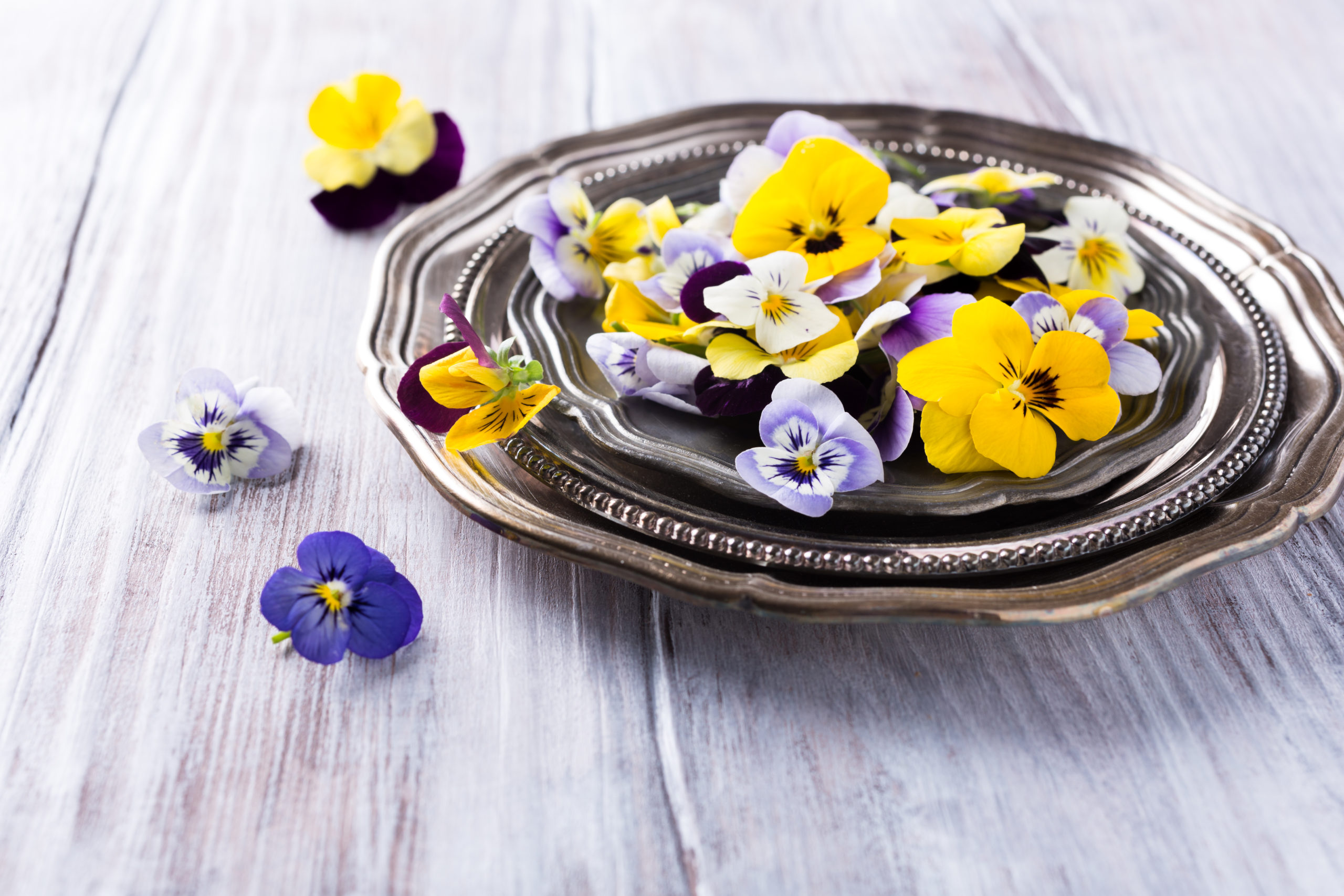At their peak season, beautiful flowers like tulips, magnolias, peonies, and more are often so striking and vivid that they look good enough to eat. Of course, this is never a great idea, as consuming any random flower can almost guarantee a trip to the emergency room and a call to poison control.
But did you know there actually are some kinds of flowers that can safely consumed from your dinner plate? If you’ve ever ordered an elegant cake or an upscale floral cocktail, there’s a chance you may have already consumed one of these edible blooms. They’re more common than you think: Like the versatility and complementary nature of herbs, many florals are at the center of some of your favorite flavor profiles, like orange blossom, elderflower, lavender and rose.
Edible flowers have grown in popularity in the U.S. over the last decade, but according to Michigan State University, using flowers in cooking dates as far back as 140 B.C. and has been consistently used in various cultures across time. For instance, rose petals are commonly used in Indian cuisine, Italian and Latin cultures are known to stuff squash blossoms, dandelions are mentioned as edible bitter herbs in the Bible, and bergamot was even used as a tea substitute during the Boston Tea Party in 1773.
Their use throughout history isn’t a coincidence, either: Some edible flowers have unique medicinal properties and significant nutritional value. According to the University of Florida’s Institute of Food and Agricultural Sciences (IFAS), and anti-tumorigenic properties. It’s qualities like these that have driven many cultures to consider certain flora part of the “functional foods” category.
Oddly enough, Florida’s tropical climate positions it as a prime spot to grow many of these edible flowers. UF’s IFAS says many small-scale producers of edible flowers exist across the state, distributing their products at local farmers markets, grocery stores and restaurants.
But what flowers could you potentially find at these outlets? Here’s a list compiled by West Coast Seeds, a Canadian seed distribution company, of a few edible flora you may have heard of:
– BASIL FLOWERS
– BERGAMONT
– VIOLETS
– DAY LILIES
– DILL FLOWERS
– ENGLISH DAISIES
Any blossom off this list can technically be consumed on its own, but these flowers truly shine when used to develop a deeper flavor profile in main meals or when transformed into a tasty dish itself. For instance, you can: fry up zucchini blossoms for a crunchy summer appetizer, steep hibiscus in hot water to make a comforting tea, sprinkle carnation petals on any frosted cake to create a floral feel, use a rose petal to garnish your next homemade cosmopolitan, or toss dandelion petals in your next salad for a tangy twist.
While certainly not a comprehensive or extensive list, these are just a handful of flowers you’ve probably encountered that are as flavorful as they are beautiful. However, it’s important to note that to the naked eye, many of these flowers appear similar—if not almost identical—to some of their severely poisonous peers. Unless you’re certain, it’s best to only eat flowers that are professionally prepared by a restaurant or sold at a grocery store or farmers market.
No need to fear flora—if properly prepped, flowers can add a wonderful twist to salads, cocktails, desserts and other meals so you can bring a slice of spring to your plate in any season.
Related Articles:
Unlocking the Secret to Eggs!

